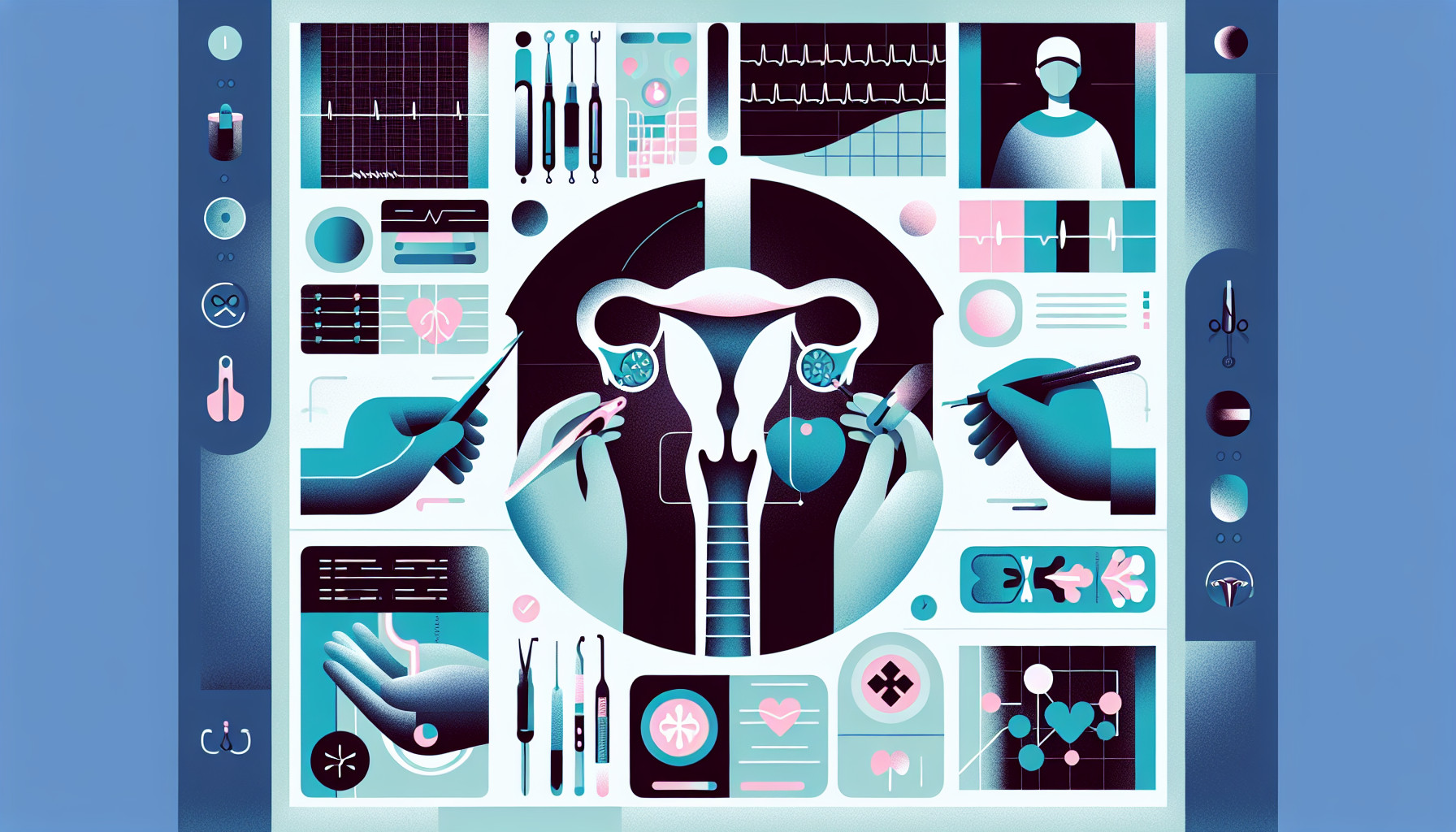Our Summary
This research paper explores the rate of a condition called morbidly adherent placenta in women who have had a medical procedure called endometrial ablation. A placenta is considered morbidly adherent when it sticks too firmly to the uterus, which can cause serious problems during childbirth. Endometrial ablation is a procedure used to treat heavy menstrual bleeding, where a layer of the uterus is removed.
The researchers looked at data from over 162,000 women who had endometrial ablation and then later gave birth. They found that the rate of morbidly adherent placenta was much higher in these women - about 1 in 14 pregnancies, compared to 1 in 839 pregnancies in women who hadn’t had the procedure. This means that women who have had endometrial ablation are more than 20 times more likely to have a morbidly adherent placenta.
In simple terms, this research suggests that women who have had endometrial ablation and then get pregnant are at a much higher risk of having a placenta that sticks too firmly to the uterus, which can cause complications during childbirth.
FAQs
- What was the objective of this study on endometrial ablation?
- What was the rate of morbidly adherent placenta in pregnancies after endometrial ablation according to this study?
- How does the rate of morbidly adherent placenta in pregnancies after endometrial ablation compare to pregnancies without prior ablation?
Doctor’s Tip
A helpful tip a doctor might tell a patient about endometrial ablation is to be aware of the increased risk of morbidly adherent placenta in pregnancies that occur after the procedure. It is important to discuss this potential complication with your healthcare provider if you are considering or have had endometrial ablation. Regular prenatal care and close monitoring during pregnancy are essential to ensure the health and safety of both the mother and baby.
Suitable For
Patients who are typically recommended endometrial ablation are those who have heavy menstrual bleeding that does not respond to other treatments such as medication or hormonal therapy. Endometrial ablation is often considered for women who have completed their families and do not wish to have any more children, as pregnancy after endometrial ablation can increase the risk of complications such as morbidly adherent placenta. Other factors that may make a patient a candidate for endometrial ablation include uterine fibroids, endometriosis, or other conditions that cause abnormal uterine bleeding. It is important for patients to discuss their options with their healthcare provider to determine if endometrial ablation is the right choice for them.
Timeline
Before endometrial ablation: The patient may have been experiencing heavy or prolonged menstrual bleeding, pelvic pain, or other symptoms related to abnormal uterine bleeding. They may have tried other treatments such as medication or hormonal therapy before deciding to undergo endometrial ablation.
During endometrial ablation: The patient undergoes a minimally invasive procedure to destroy the lining of the uterus, typically with the goal of reducing or stopping menstrual bleeding. The procedure can be performed in a doctor’s office or outpatient setting, and recovery time is usually short.
After endometrial ablation: The patient may experience some cramping, spotting, or discharge in the days following the procedure. Over the following weeks and months, they may notice a decrease in menstrual flow or the cessation of menstrual periods altogether. Some patients may also experience changes in their hormonal balance or menstrual cycle.
Subsequent pregnancy: If the patient becomes pregnant after endometrial ablation, there is an increased risk of complications such as morbidly adherent placenta. This condition, also known as placenta accreta, increta, or percreta, occurs when the placenta attaches too deeply into the uterine wall. It can lead to severe bleeding during delivery and may require a hysterectomy to control the bleeding. Patients who have had endometrial ablation should be closely monitored during pregnancy and delivery to detect and manage any complications that may arise.
What to Ask Your Doctor
- What is endometrial ablation and how does it work?
- What are the potential risks and complications associated with endometrial ablation?
- How long after undergoing endometrial ablation should I wait before trying to conceive?
- What is the likelihood of experiencing morbidly adherent placenta in a pregnancy following endometrial ablation?
- Are there any specific precautions or monitoring that should be taken during pregnancy after endometrial ablation?
- How will a history of endometrial ablation affect my prenatal care and delivery?
- What are the treatment options available if morbidly adherent placenta is diagnosed during pregnancy after endometrial ablation?
- Are there any long-term effects or considerations for future pregnancies after undergoing endometrial ablation?
- What is the likelihood of successful pregnancy outcomes after endometrial ablation?
- Are there any alternative treatments or procedures that may be recommended instead of or in addition to endometrial ablation for my specific condition?
Reference
Authors: Bauer AM, Hackney DN, El-Nashar S, Sheyn D. Journal: Am J Perinatol. 2018 Aug;35(10):931-935. doi: 10.1055/s-0038-1626710. Epub 2018 Feb 8. PMID: 29528466
